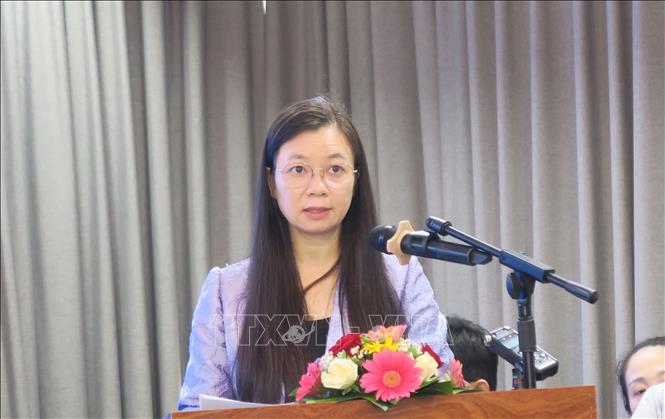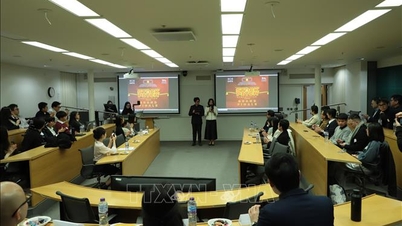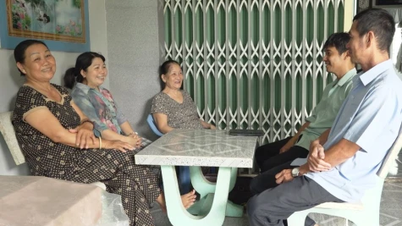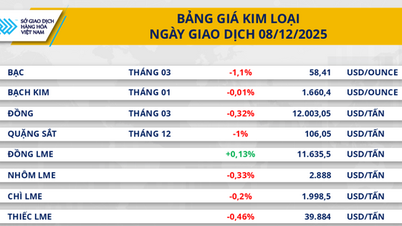
According to the Department of Population ( Ministry of Health ), in the period 2006 - 2021, Vietnam has achieved and maintained the replacement fertility rate of 2.1 children/woman - an important achievement in population work. However, in the past 3 years, the total fertility rate of the whole country has decreased below the replacement threshold. In 2022, it was 2.01 children/woman, in 2023 it was 1.94 children/woman and in 2024 it continued to decrease to 1.91 children/woman. It is forecasted that in 2025, this number may decrease below 1.87 children/woman. Currently, the whole country has 13/34 provinces and cities with a fertility rate below the replacement threshold (below 2.1 children/woman), accounting for 58% of the country's population. Of which, the 5 localities with the lowest fertility rates include: Ho Chi Minh City, Can Tho, Tay Ninh, Ca Mau and Vinh Long.

Ms. Nguyen Thi Thu Hien, Vice President of the Vietnam Women's Union, assessed that the decrease in the replacement birth rate is not only a demographic indicator but also reflects the unsustainable state of human development. In reality, many women of childbearing age, especially young women living and working in large cities, industrial zones, and export processing zones, are facing dual pressures: both participating in labor to generate income and shouldering the responsibility of taking care of the family. Meanwhile, policies supporting childbirth, childcare, childcare systems and social welfare have not yet met actual needs. These barriers make many women afraid to give birth or do not want to give birth, creating challenges for family structure, the workforce and future social development.
According to Ms. Nguyen Thi Thu Hien, the lessons of previous high-income countries have shown the serious consequences if the total fertility rate is lower than the total replacement fertility rate. Labor decline leads to economic recession, immigration to compensate, causing challenges for society; the risk of public debt crisis and pension fund collapse when the population is increasingly aging; population decline, the rate of increase puts pressure on the social security and health care systems. Therefore, there must be policies to solve the root cause of the problem, which is real support, a favorable social environment, creating conditions for young couples, especially women, to have peace of mind to give birth, raise children and develop themselves.

Professor Nguyen Thien Nhan, former Deputy Prime Minister, assessed that although Vietnam is facing the risk of unsustainable human development and population aging in the next 75 years like all high-income countries and many middle-income countries today, Vietnam can completely shift from unsustainable human development and population aging to sustainable human development and population aging. The first condition is to have a breakthrough in innovation of thinking, a breakthrough in policy and implementation organization.
Proposing a solution, Professor Nguyen Thien Nhan said that there should be a reasonable roadmap to change from the minimum wage regime to a living wage regime for a family of four, and increase the actual family deduction when calculating personal income tax so that workers have enough income to raise two children in a family. "If we do not ensure a living wage for a family of four, there will never be sustainable human development," Professor Nguyen Thien Nhan stated his opinion.
The State needs to have regulations on moderate working hours for workers (8 working hours/day, 40 hours/week) so that they have time to find a partner, take care of children, family and satisfy their private interests. There needs to be a competitive housing market, support and supervision from the State so that workers can rent or buy houses at acceptable prices. In addition, working conditions, maternity regime, salary regime, and promotion in enterprises must encourage marriage and childbirth, not creating conflicts between work, family and childbirth; implement practical support programs for infertile couples to have children; encourage the birth of 2 and 3 children in all localities until the total fertility rate of the whole country reaches the replacement fertility rate.
Source: https://baotintuc.vn/xa-hoi/tao-moi-dieu-kien-de-nguoi-tre-phat-trien-ban-than-yen-tam-sinh-con-20251022164206108.htm

















































































































Comment (0)